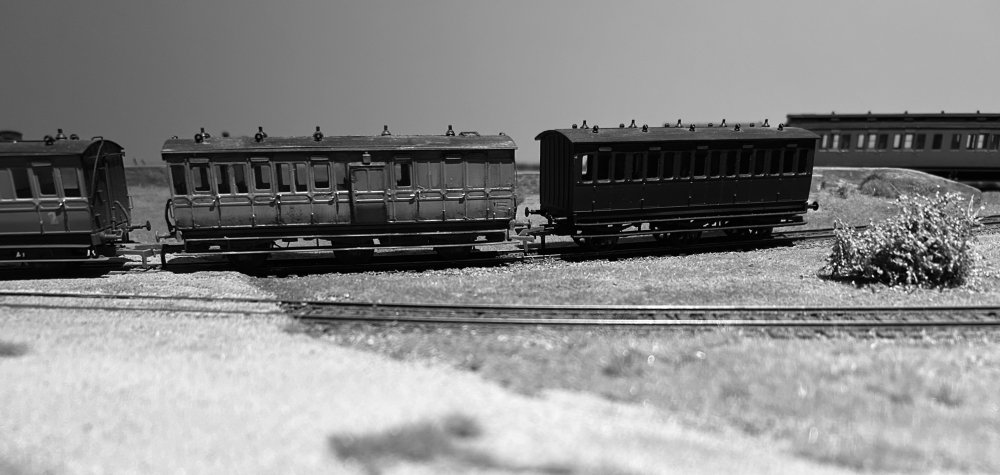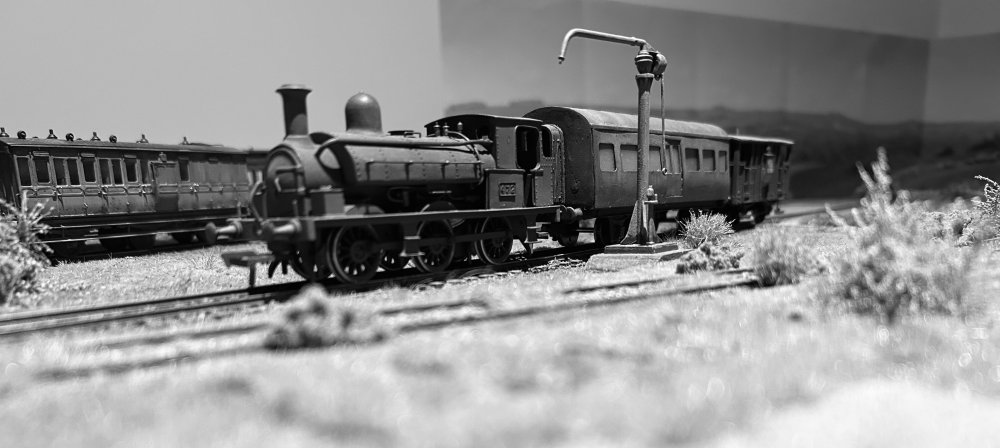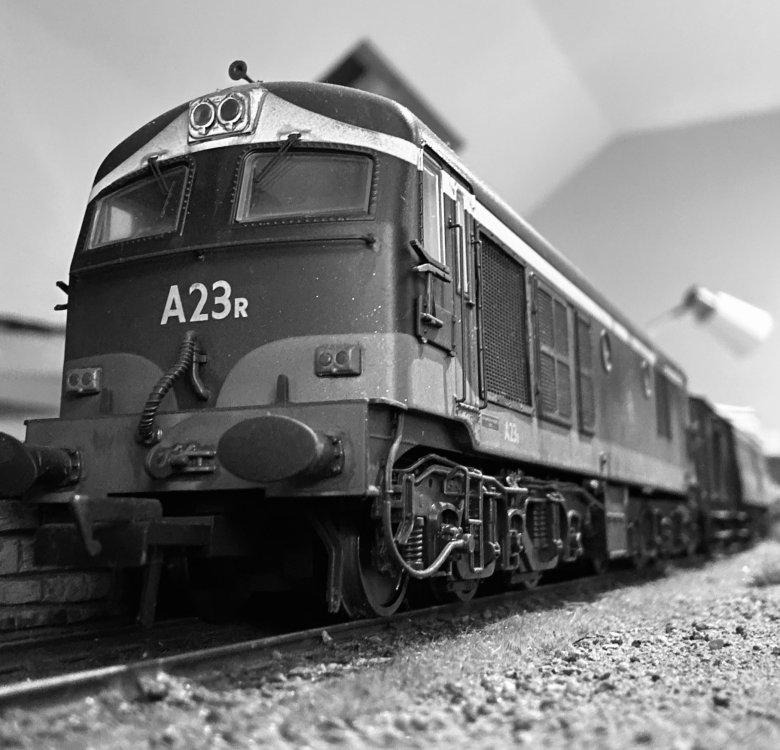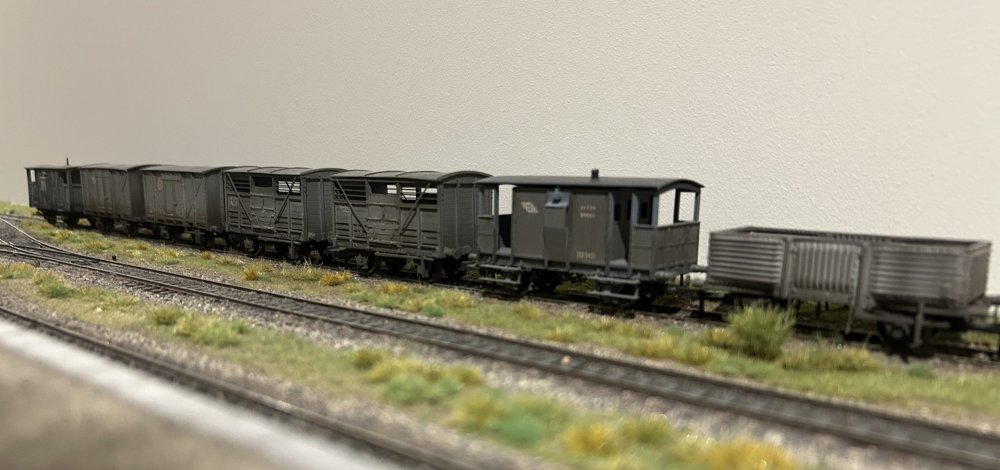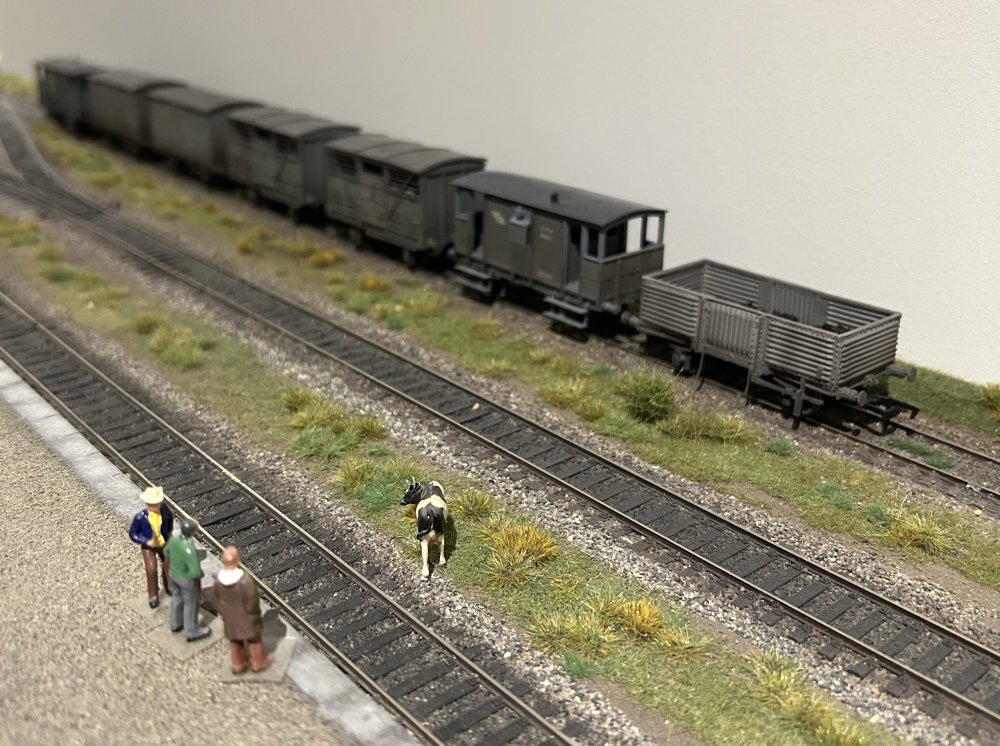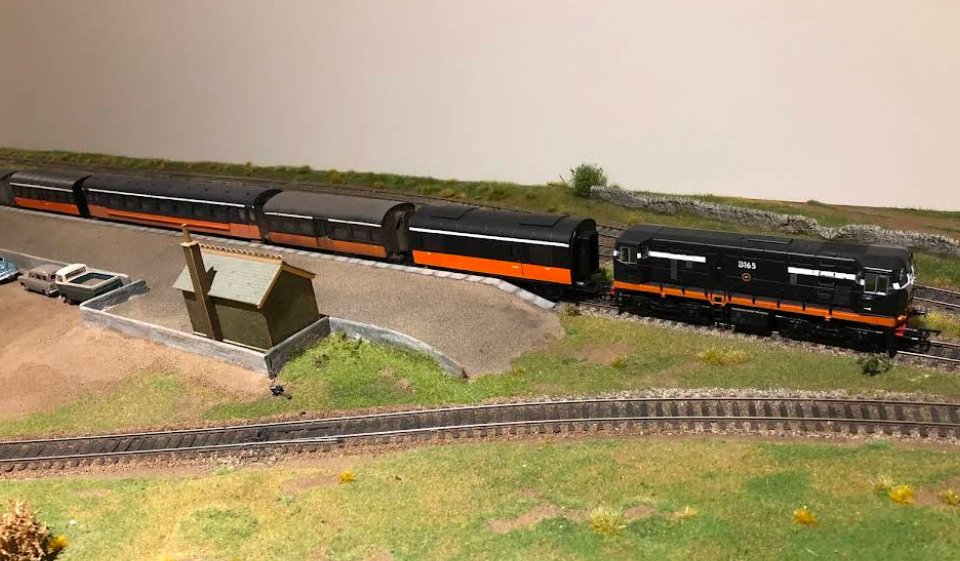-
Posts
15,873 -
Joined
-
Last visited
-
Days Won
393
Content Type
Profiles
Forums
Events
Gallery
Everything posted by jhb171achill
-
On fair day, whatever elderly stock Cork and Tralee can dig up, will end up on the extra trains for cattle drovers and dealers. In addition, trains between Dugort and “town” are very busy that day. Here, in 1956, the last DSER six-wheeler in traffic, still in GSR maroon, has made what will probably be its last appearance ever. It is joined by a GSWR equivalent - note the different designs. The 1888-built GSWR brake third was the regular passenger brake on the branch then, and could be companion to a six-wheeler of similar vintage - or a two-month-old silver “Park Royal”… Shunting at Dugort Harbour, 1959, with the then regular branch engine, the last of its kind. The brand-new supposedly “silver” tin van is filthy; the ancient van behind it, dating from 1902, somewhat better looking!
-
A23R is caught shunting in the fuel road, Dugort Harbour, summer 1974. On the same day, empty wagons are seen in the cattle loop awaiting departure tomorrow morning on the back of the Tralee goods.
-
-
Worth pointing out too, for those too young to remember, far from a perhaps modern impression that GNR locos were blue, the vast majority were black. Only certain passenger classes were blue. Even preserved 85 "Merlin" and her classmates were black when first in traffic, only later repainted blue. None of the P or PP class were ever blue.
-
0 scale version in Malahide Model Railway Museum of a whole Lartigue train, made by Cyril Fry!
-
Making an ‘E’ – the Maybach Diesel Model Assembly thread
jhb171achill replied to Mol_PMB's topic in Irish Models
Outstandingly good! -
Making an ‘E’ – the Maybach Diesel Model Assembly thread
jhb171achill replied to Mol_PMB's topic in Irish Models
N E A T !!!!!! -
MCWR = Monserrat, Calcutta and Wolsztyn Railroad. Surely you’re aware ‘twas the gem of the colonies….
-
Got it! I do remember, as a small citizen, seeing pigeon boxes in Lisburn, Great Vic St & Amiens St at the very least.
-
Can only find hundreds of gaa function pics here?
-
Until the 1970s, pigeon societies used to transport racing pigeons by rail to furthest-away points, to see which got home first. Latterly, they could be seen being loaded into “tin vans”. Here, in summer 1964, the Dugort local is augmented by two extra vans which were sent from Omagh by the Newtownstewart & District Homing Pigeon Society for release there on this morning. The vans, with empty pigeon baskets, are leaving here. The baskets will travel back to Amiens St., from where they’ll be attached to tomorrow’s newspaper train as far as Portadown. Here, they’ll be put in a goods van attached to the down Foyle Road goods, while the vans will go back to Dublin with mailbags in them.
-
They’ve lots of them in Porteedown, Sandy Row, Korrikfergus and Bollameena, if you’re running short…..
-
I blame Elon.
-
Callum, you had asked me in recent days about where the drawings might be - they've been posted on another thread here in the last 24 hours. Hoping you saw them. It seems CIE have them now. To others here; I've seen the frames for 800 which Callum has made already. Ooooh boy, this locomotive when finished will be a real BEAST!! Can't wait!
-
Wouldn’t surprise me in this day and age!!
-
Gawwwwwd I hope not!!!! (reaches for smelling salts.....) Well, he's bought it. And Kerry is paying for it.
-
Thankfully not! But he might buy it and build a wall round it, and make Kerry pay........
-
But there’s a shipping fee of £$€200 per item to any address in the Rebel County….
-
Are you looking to purchase, or donated ietms? Folks here would possibly like to know.....
-
The Eagle Has Landed - NIR Hunslets Next For Accurascale IRM
jhb171achill replied to Warbonnet's topic in News
And somewhere to tell lies...... -
Was thinking that very thing! It's actually the only other one I can think of. Wasn't that yoke a contractor's loco rather than the actual property of the SLNCR? I've a notion some contractor's loco somewher down south, maybe on the DWWR, had an Irish name - but it was possibly that same one. Not sure - I'd have to look it up.
-
One of the exceptionally rare instances of the Irish language being used on any Irish railway pre-GSR times.
-
OBB HOe layout "Connafeld"
jhb171achill replied to Georgeconna's topic in Continental European Modelling
BRILLIANT!! -
MOST interesting what’s behind the engine - the tin van will be newspaper traffic between Connolly and Portadown / Belfast - but behind that - an NCC “brown van”!! These were regular enough carrying newspapers and mailbags between Great Victoria Street and Portadown (I think the picture is near Moira, where the main line crosses the Lagan Navigation Canal), but far more often on the back of railcars, rarely in a goods train. As an aside, I’m unaware of any reports, let alone evidence, of any brown vans ever seen south of Portadown. While Warrenpoint was still operating, it was all GNR (and CIE) vans to be seen in those parts.
-
Looking forward to it!
.png.c363cdf5c3fb7955cd92a55eb6dbbae0.png)

